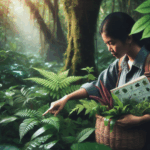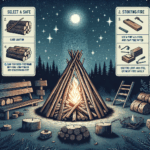From Forest to Table: A Beginner’s Guide to Foraging
Foraging, the practice of gathering wild plants and fungi for food, has gained popularity in recent years as people seek to connect with nature and explore the abundant edible resources that can be found right in their own backyards. From forest to table, foraging offers a unique and sustainable way to enjoy fresh, seasonal ingredients while also learning about the natural world around us.
For beginners interested in foraging, it can seem like a daunting task to know where to start and what to look for. However, with a little knowledge and guidance, anyone can begin to explore the wonders of wild edibles and incorporate them into their cooking.
The first step in foraging is to educate yourself on the plants and fungi that are safe to eat and how to properly identify them. There are many resources available, such as field guides, online forums, and local foraging classes, that can help you learn about the edible species in your area and how to distinguish them from potentially harmful look-alikes.
Once you have a basic understanding of foraging and feel confident in your ability to identify edible plants and fungi, it’s time to head out into the forest or fields to start gathering. Keep in mind that foraging is best done in areas that are free from pollution and pesticides, so try to find a location that is as natural and untouched as possible.
When foraging, it’s important to practice sustainable harvesting techniques to ensure that the plants and fungi you gather can continue to thrive in their natural habitat. Only take what you need, leave some behind for wildlife and other foragers, and be mindful of the impact you have on the environment.
After gathering your wild edibles, it’s time to bring them to the table and incorporate them into your cooking. Wild plants and fungi can add unique flavors and textures to your dishes, and can be used in a variety of ways, such as in salads, soups, stir-fries, and even desserts.
Some popular wild edibles that are commonly foraged include morel mushrooms, ramps, fiddlehead ferns, and wild berries. These ingredients can be used to create delicious and nutritious meals that highlight the flavors of the natural world.
Foraging is a rewarding and fulfilling experience that allows you to connect with nature in a new and exciting way. By learning about the edible plants and fungi in your area, practicing sustainable harvesting techniques, and incorporating wild edibles into your cooking, you can enjoy the bounty of the forest and create delicious meals that celebrate the beauty and diversity of the natural world. So grab your basket and your field guide, and start exploring the world of foraging today!



